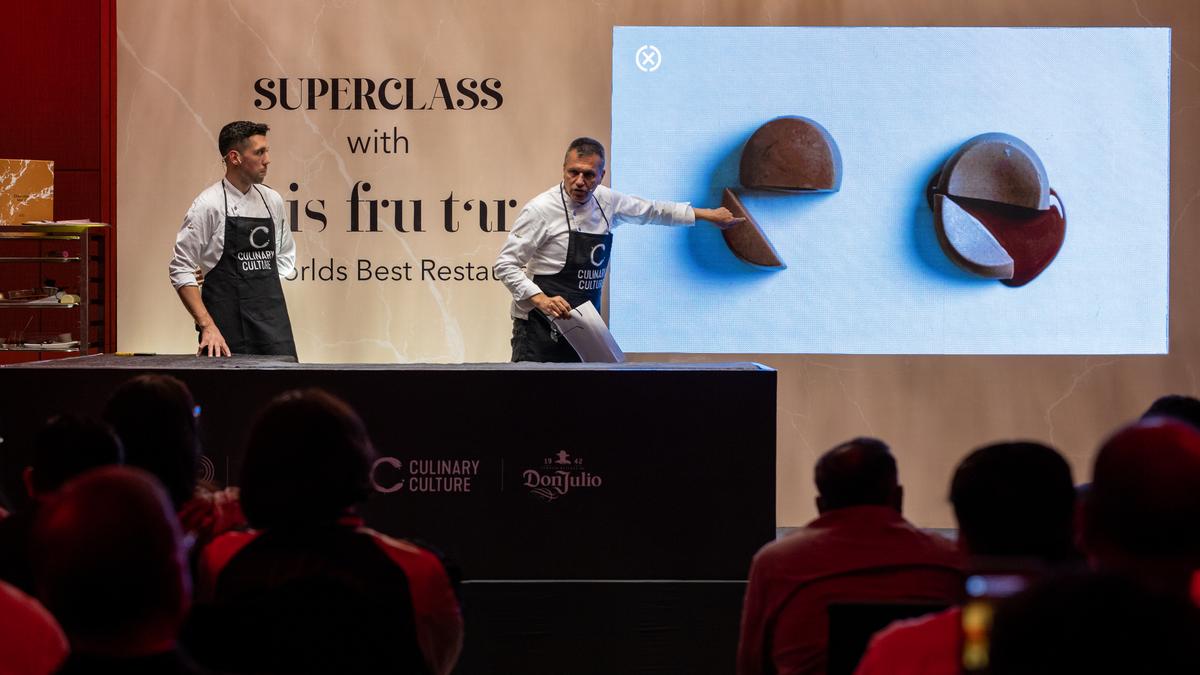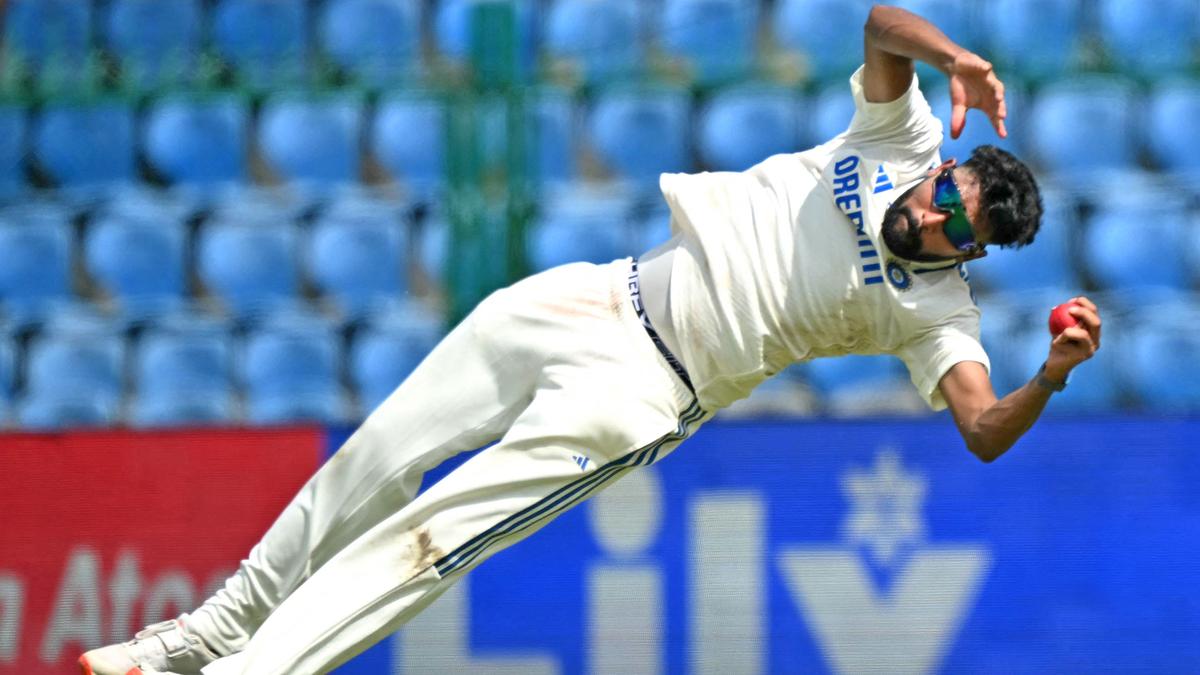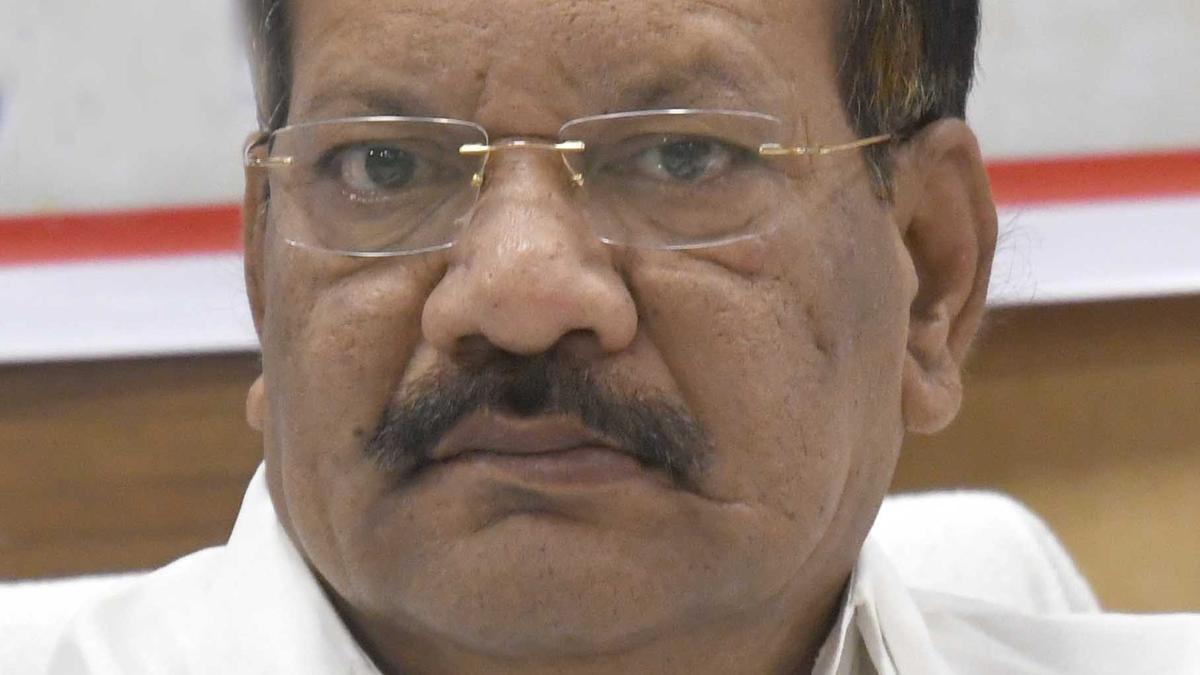In less than 24 hours of landing in Delhi, Chef Oriol Castro went on a spin around the city, experienced its markets, tasted local food and sat through half a dozen interviews. Yet, there was no trace of fatigue on his face. It could be because of his trademark energy, or because he was really excited to be in India — a place, he says, he has been waiting to come to forever.
“I am so happy to finally be here! I have always wanted to see this land of great history and immense gastronomical culture,” quips the cheerful chef, who was at The Oberoi New Delhi courtesy of global culinary exchange platform Culinary Culture and Don Julio tequila.
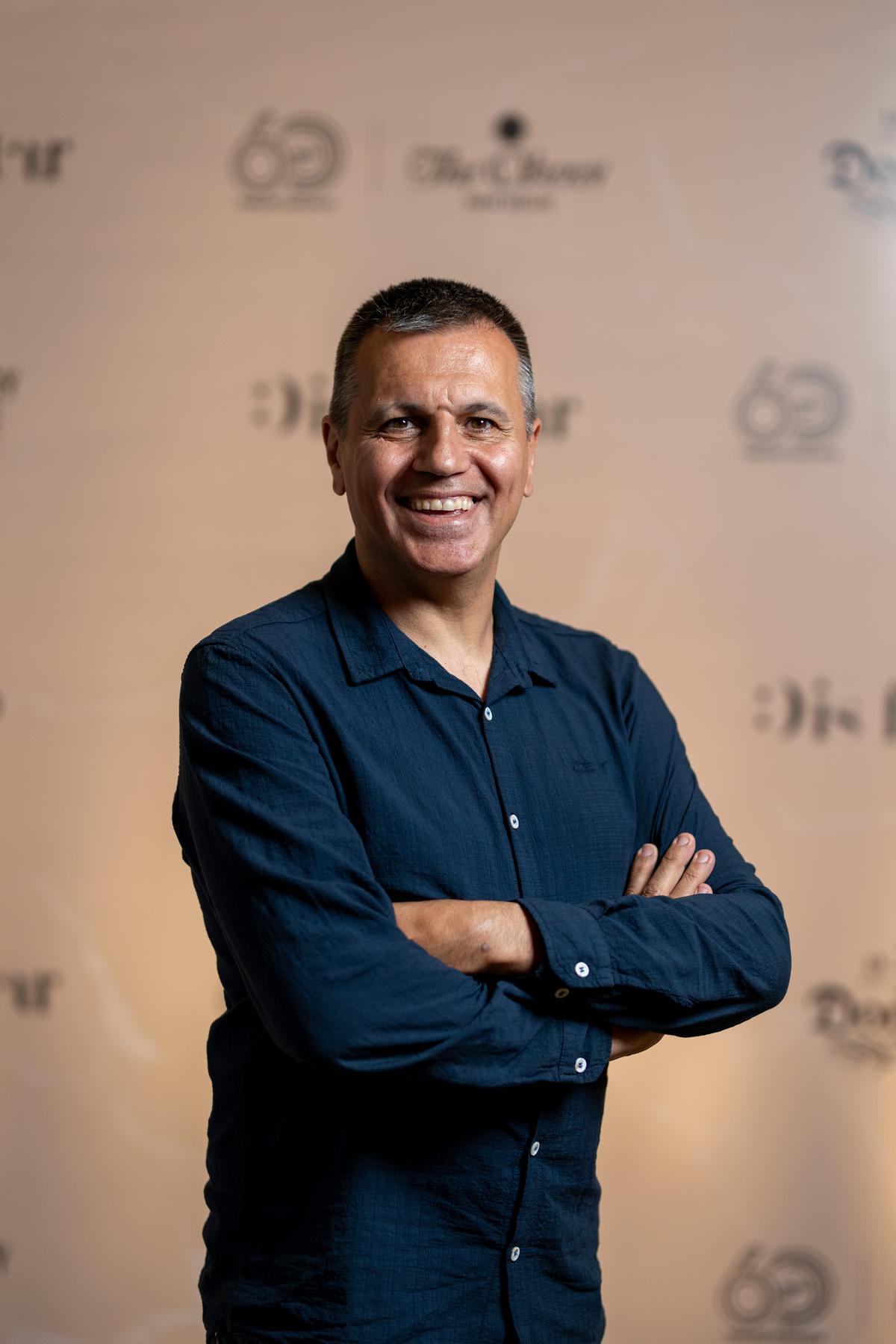
Chef Oriol Castro
| Photo Credit:
Special Arrangement
Incidentally, Oriol was not in the city to cook a meal but to teach people how to cook some of his signature dishes from Disfrutar, the three Michelin star restaurant in Barcelona, currently regarded as the world’s best restaurant.
And why is he not cooking for us? We are compelled to ask. “Our cooking needs certain ingredients, equipment, technique, and labour, all of which is only possible in our own kitchen, but we do many collaborations like this where we teach our recipes,” explains the chef whose restaurant is endorsed by the who’s who and sees over a year long waitlist for reservations.
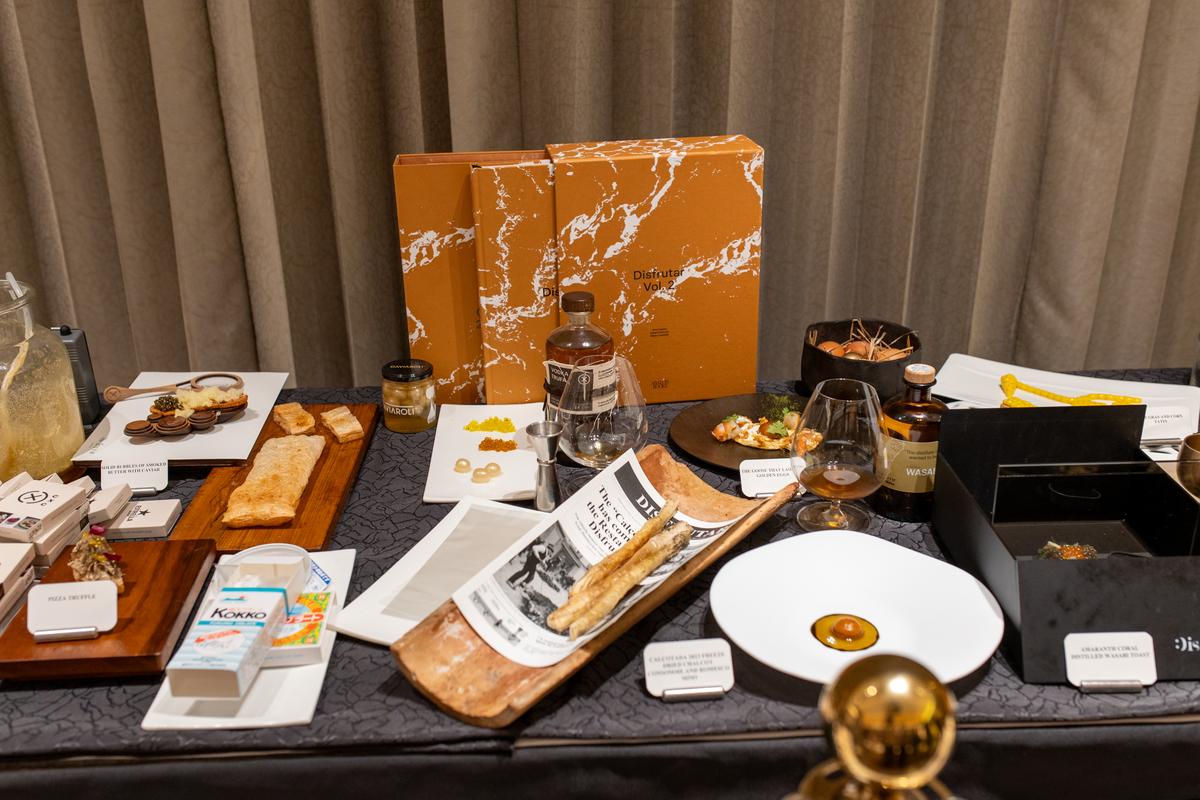
Dishes prepared at the masterclass
| Photo Credit:
Special Arrangement
Creating a legacy
A protégé of the iconic El Bulli, a restaurant that reinvented Spanish cuisine and put it on the world map, Oriol along with his co-owners, Chef Eduard Xatruch and Chef Y Mateu Casañas, is known to have taken revolutionary culinary techniques (like foaming and spherification) from El Bulli to new heights at Disfrutar.
While they offer a 28-course classic tasting menu — and a 30-course option called the Festival Menu — it was Bulli that had introduced the concept of elaborate tasting menus. “In the beginning tasting menus meant serving only two-three starters. In the 90s we began changing that by adding more tapas and small plates. Slowly, we made it to 10 courses — which was an important turning point in the history of tasting menus and something that has caught on since. Some of these courses change for regular diners to ensure there is no dining fatigue.” The idea behind the large menu, he explains, is to showcase a variety of techniques, flavours and tastes. “Creating a tasting menu, I feel, is like making music — just as the combination of many notes make a song, many little things come together to make an experience like this.”
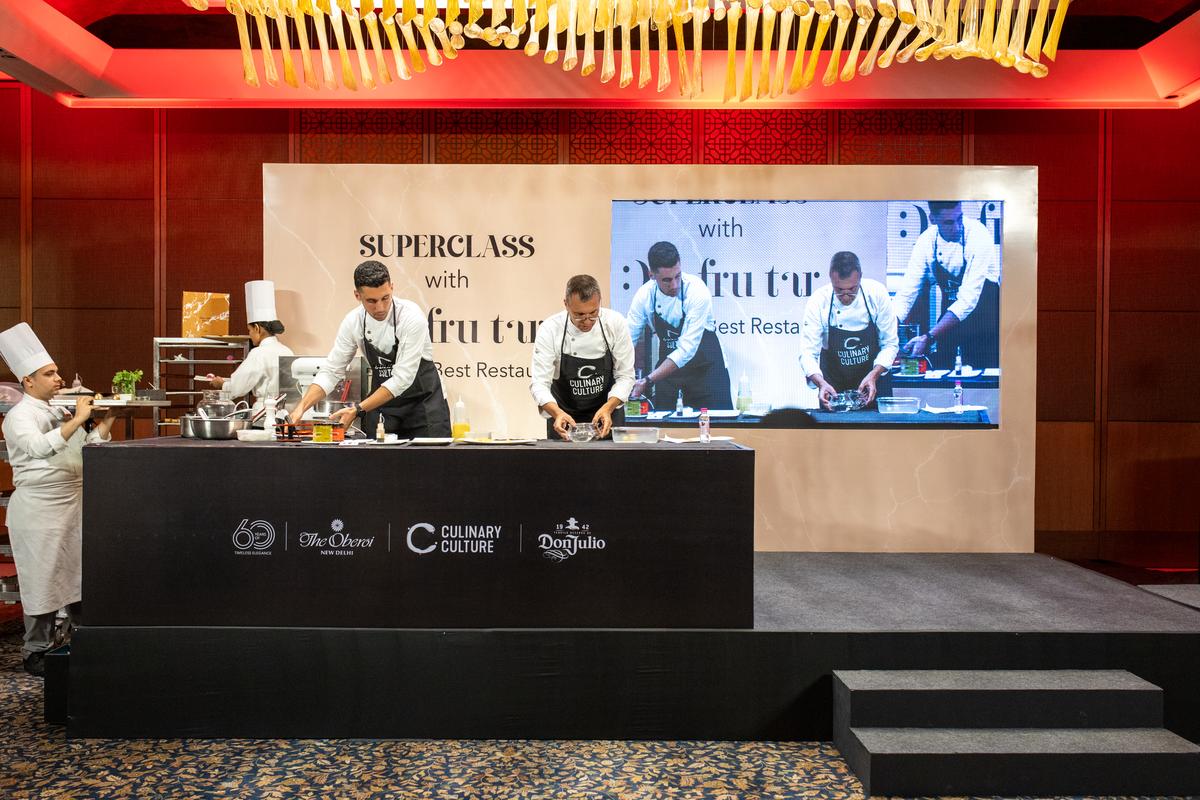
Chef Oriol Castro (right) at the masterclass
| Photo Credit:
Special Arrangement
Sharing knowledge
Like Bulli, that openly shared and published all its recipes, Disfrutar has been documenting all its recipes too. Their cookbooks (they publish one every three years) also come with scannable codes that take you to videos showcasing the methodology behind each recipe. When questioned on whether he feels sharing their recipes openly might be a self-sabotaging practice, Oriol shrugs. “Life is about being generous and sharing your knowledge, so no problem at all! C’est la vie!” he grins.
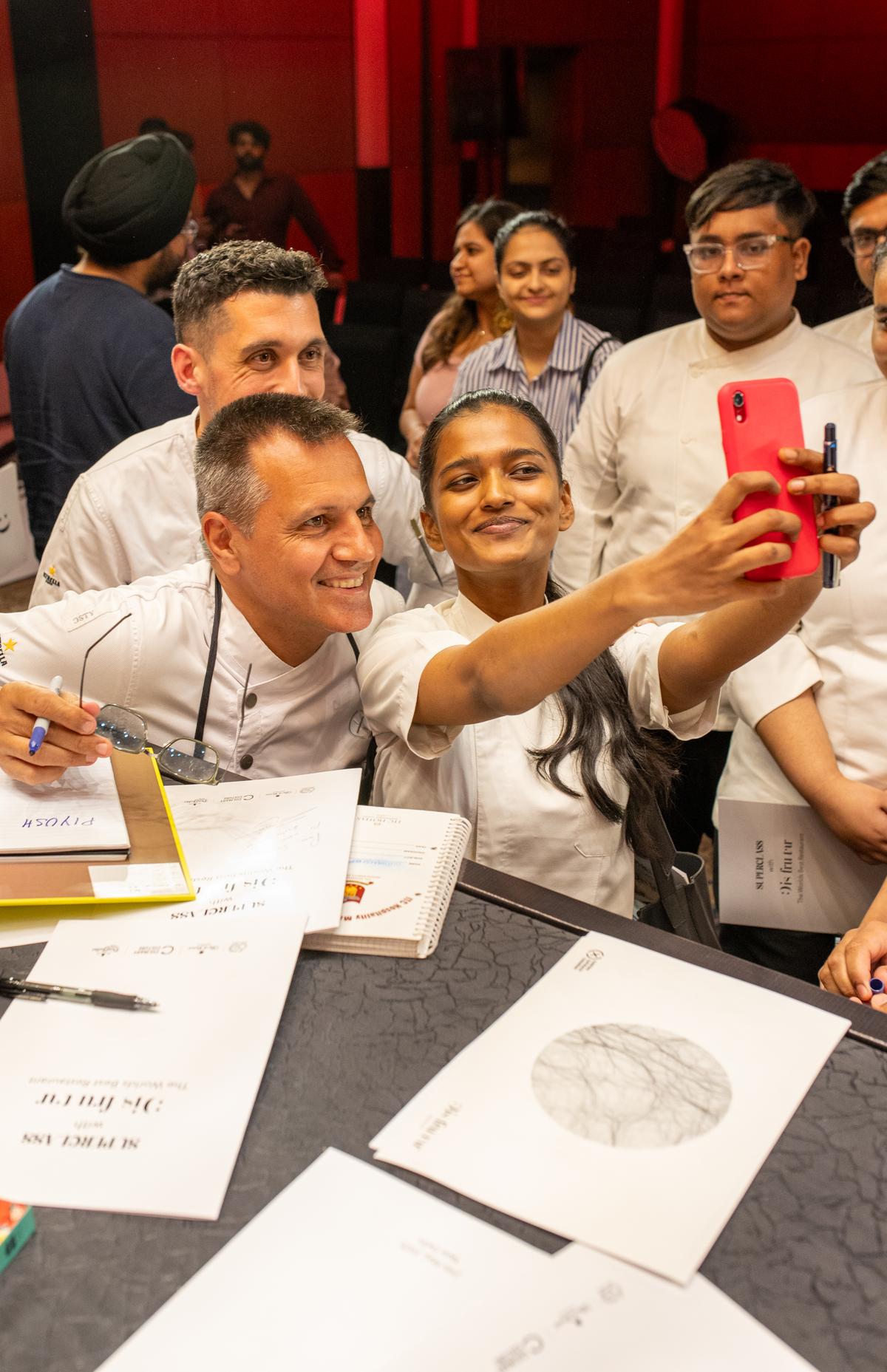
Chef Oriol Castro with students from Indian School of Hospitality (ISH)
| Photo Credit:
Special Arrangement
Taking the philosophy forward, the superclass at The Oberoi New Delhi, focussed on showcasing the complex methodology of some of the signature dishes at Disfrutar. Participants, which included India’s top chefs like Avinash Martins, Varun Totlani, Kavan Kutappa, Manish Mehrotra, young culinary students and food enthusiasts, got to witness the making of recipes such as The Goose That Laid The Golden Eggs, a dish with a shimmering golden egg yolk that is in fact a spherified, intensely savoury crustacean bisque made with prawn heads; Calçotada 2023, a dish made with sweet onions called calçots that sprout across Catalonia every winter; and Pizza Truffle, a flourless cocoa pizza with truffle, among several others.
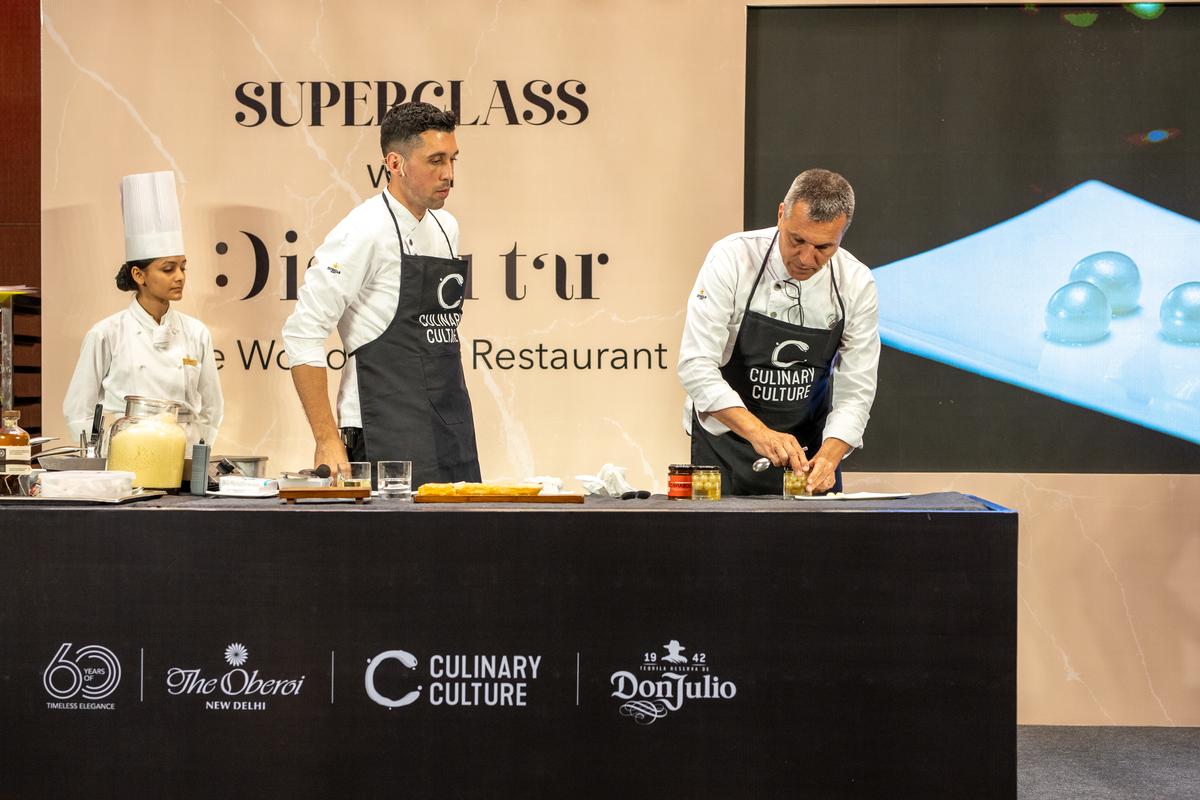
Chef Oriol Castro (right) at the masterclass
| Photo Credit:
Special Arrangement
Impression of Indian food
It may have been his first visit to India, but the chef’s knowledge of Indian food is remarkable, something he owes to the Indian restaurant in front of his home where he and his children love to regularly dine, and to Indian chefs that work with him in his kitchens. “There are so many bright young Indian students across culinary schools in Spain. Even at Disfrutar we have many Indian chefs and we learn so much from them everyday.”

Macarons created at the masterclass
| Photo Credit:
Special Arrangement
Oriol, who visited a host of wet markets in Delhi, also equates Indian markets to Spanish mercados, “with fresh greens, potatoes, tomatoes, and a large variety of seasonal vegetables and meats just like our markets.” Having grown up by the sea on freshly made home cooked food, his fondness for seasonality relates with that of India just like he correlates the complexity of our cooking techniques to that of Spanish cuisine.
So where does he see India fitting in the culinary map? “Indian food is waiting to be the next big thing. It has flavours, it has technique and it has this vast cultural history backing it,” he says, adding “I truly feel it is the time for India to shine.”
Published – June 04, 2025 01:05 pm IST
